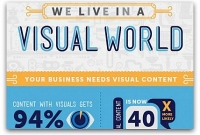The HR tech stack has been consistently evolving for decades. From moving to the cloud, to the rise of mobile and video, to big data, we’ve been following this evolution for quite some time. Successful businesses are constantly optimizing new automated processes to further a world-class talent management strategy. In fact, 65% of employers globally believe HR tech will free up workers to focus on more knowledge-intensive tasks.
Regardless of company size, one cannot afford to ignore providing employees with the best possible training. Effective training, in essence, the scaffold that will help businesses grow and remain competitive. As such, learning programs need to diversify and adjust to the needs of the workforce. Why? Traditional delivery systems are not as productive in this new era of digitally enabled learning and development. The HR Exchange Network presents Leveraging Technology to Improve Learning Experience. We surveyed HR professionals around the globe about Learning & Development and learning strategies.
I always think of this time of year as “budget season”. You know, when organizations are thinking about what they’ve accomplished during the current year and the goals they want to achieve in the upcoming year. Not only is it great for performance, but it helps to create the budget. In my experience, I found that when putting together the HR budget and department goals, I needed to come prepared with data. It wasn’t enough for me to say, “I believe this is happening …” or “I’ve heard that our competitors are doing …”. I had to come to the meeting with internal data in the form of cost per hire, turnover, exit interview analysis, etc. AND, external data about what was happening in the talent market. This infographic from our friends at Saba is worth bookmarking for future reference.
Forty-six percent of workers in a recent survey reported feeling they were underpaid. Which of your employees are most likely to feel that way?
The employee handbook: It sounds so routine, like something that’s been around forever and just needs a quick and easy update every year or so, a task that an HR professional like yourself can handle with ease. But, considering the rapidly changing legal landscape and the ever-growing number of ways employers are finding themselves caught up in litigation, the complexity of handbook writing becomes clear. We've created this Employee Handbook Checklist so you can rest assured that all of your bases are covered and that you can draft an Employee Handbook that keeps your employees informed and helps you avoid any devastating lawsuits.
Most employers are aware of the benefits that come from cultivating a culture of wellness among employees. But finding the right approach to encouraging wellness can be tricky.
Discover how the right online community can power behavior change in your workforce, leading to better overall health. To effectively reach your employees and health plan members, you must invest in a range of strategies to engage them in healthy behaviors. Offering just nutrition and fitness programs isn’t enough – you must focus on all aspects of wellbeing to drive overall work performance and increase participant engagement.
In today's ever-changing economy, employees want to keep their skills up-to-date and to progress in their careers. Likewise, most employers need skilled workers in order to effectively compete in terms of quality, customer service and productivity. But how well are organizations performing in this area? To find out, HR.com produced this study in partnership with BambooHR, a leading provider of HR technology for small and medium-sized businesses. Read this exclusive HR.com research report to learn what differentiates organizations with good career development from those with poor career development, and to assess how well organizations are handling career development.
Winning top talent and managing those employees well takes a holistic approach to organizational wellbeing, structured for the changing drivers of employee engagement. That means strategically investing in your employees’ health, talent, financial security and career growth. And developing sustainable benefit and HR programs at the right cost structure to support a multigenerational workforce.
Every week, it seems like there is a shocking new #MeToo or #TimesUp controversy dominating the headlines. Amid these powerful movements, companies must be more vigilant than ever to avoid becoming the next newsworthy story. Not only will an effective sexual harassment prevention training program protect your employees, but it'll protect your business from costly lawsuits and devestating public accusations before they happen.
Recent research shows 85 percent of employers said engagement was a top priority for their organization, but 70 percent of employees’ engagement is decided by the way those employees are managed. How can you scale good management across your organization?
Even in an era of instant digital communication, the age-old town hall can still hold a special value for engaging employees.
Gap plans, also called supplemental voluntary insurance, include hospital indemnity, cancer and critical illness. However, these types of plans only provide narrow, event-driven coverage. This leaves your clients’ employees open to high costs from everyday health expenses and other uncovered expenses. Another option, expense reimbursed insurance, can provide more valuable coverage.
Did you know that it’s 50 times easier to get a video to rank on the first page of Google than other content types? Here’s why visuals are an important part of any content strategy.
Discover the practical, realistic ways that communicators are using these technologies to deliver messages, streamline communication and boost efficiency.
Understand how executive medical reimbursement plans are still possible and powerful in a post-ACA landscape.
Your clients all know the struggle to find qualified, top-tier job candidates in the open market. Recruitment and retention comes down to more than just salary. It must involve a stellar benefits package. Ensuring your clients have the benefits they need to entice the best executive-level employees to come and stay is critical to your role as a broker.
Why is measurement such a bugbear in IC when it’s so critical to the personal success of internal communicators and the organizations they work for?
A new nationwide survey of HR professionals, managers and non-managers examines their experiences with and opinions towards workers with criminal records.
Which weekdays are best for internal emails? How long is the ideal subject line? Too often, communicators fall back on guesswork when sending email. It shouldn’t be that way with a measurable channel that’s essential to nearly every organization’s communications.
Did you know that 60% of companies currently offer some type of telecommuting benefit to their employees? And that 1/3 of employees report that they’d be willing to take a pay in exchange for telecommuting benefits?
Whether you already have a telecommuting program in place or you’re considering offering any form of an off-site benefit to your employees, this infographic will help employers to create a telecommuting/work-from-home arrangement that benefits everyone involved!





![Training Decisions Have Real Bottom-Line Growth [Infographic]](/media/k2/items/cache/057acae1d45bff2130e8f74dbba70218_S.jpg)
















